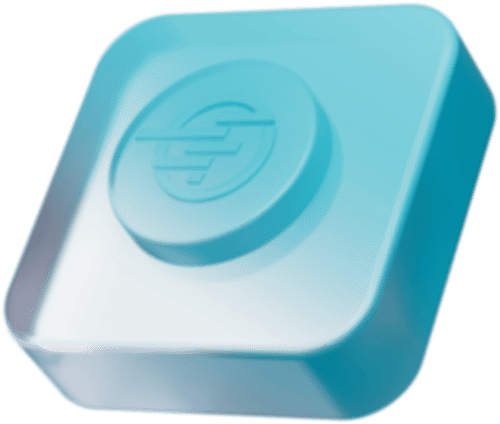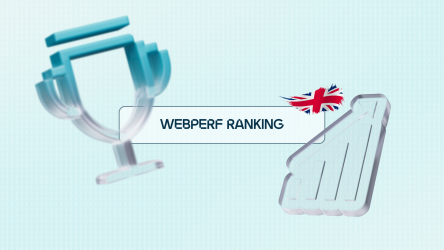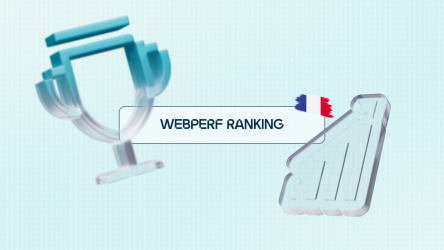SEO is a mandatory stage for developing an online store. It promotes the site in search results, thus attracting potential customers and affecting the final revenue. Therefore, internal SEO for ecommerce should be carried out as early as possible. Ideally, some of the work should be performed at the development stage. This will reduce the time spent on SEO after the launch and make receiving the first search traffic and sales much faster.
Why SEO is Crucial for Ecommerce Website?
SEO is a complex technical, on-page, and off-page website optimization process. It includes different practices, from page speed improvements and optimized content creation to link building for boosting a website’s search visibility and gaining more organic traffic.
Ecommerce SEO uses almost the same methods, but its principal purpose is to increase organic traffic to product and category pages and thus increase sales. If your website is placed on the 2nd, 3rd, or even 4th search engine results page, it is hard to generate traffic. Less than 1% of users reach the 2nd page of search engine results.
Here are 3 reasons for using SEO for ecommerce websites:
- Organic search can be a game-changer. 40% of global eCommerce traffic comes from search engines. Ignoring SEO means potentially losing out on a massive chunk of potential customers.
- SEO can build your trust. According to Feedvisor, lower prices (29%), convenience (21%), free shipping (14%), product availability (7%), and good customer service (7%) are the top 5 reasons consumers choose to shop online. Suppose your site ranks high on search engines. It signals to customers that your business is credible.
- SEO is cost-effective. Data from 2024 shows that SEO-driven traffic has a 14.6% conversion rate, compared to just 1.7% for traditional outbound methods like direct mail or print advertising.
Simply put, if you’re running an eCommerce business in 2024, SEO is non-negotiable. The numbers back it up, and the benefits are clear.
Best SEO Strategies for Ecommerce Websites
Here are the top 3 SEO strategies worth your attention for ecommerce website promotion.
High-Intent Keyword Research & Content Creation
Source: Google
Finding high-intent keywords for eCommerce is crucial for driving traffic that actually converts. Search intent is the reason behind a user’s search query. It can be informational, navigational, or transactional.
Identifying user intent ensures that the content matches what users are looking for. This leads to higher engagement and conversion rates. For eCommerce, you’re looking for commercial or transactional intent. These are keywords that show the user is ready to buy or is researching products with the intention to purchase soon. Think about terms like “buy,” “best price,” “review,” or specific product names and models.
Here is how you can find high-intent keywords for ecommerce:
- Analyze competitor keywords. Check out the keywords your competitors are ranking for. Focus on those that have clear commercial intent. Suppose a competitor is ranking for “best deals on laptops”. That’s a keyword you might want to target too.
- Analyze your Google Search Console data. Your content is collecting impressions daily. This happens even with keywords you didn’t plan to rank for. You can screen the data to find unique commercial intent keyword ideas.
- Create a keyword theme. These are sets of semantically-connected terms all conveying the identical search intent. For example, the keyword theme list for a brownie cookie recipe page may contain terms like “brownie cake recipe,” “make a brownie cookie,” “how to bake a brownie cookie,” and “brownie cookie baking steps”.
- Use a keyword research tool. This is the most efficient and data-driven method. Start with a seed keyword (a more prominent topic/category within your niche) and employ it to uncover more keyword ideas.
You also should use LSI keywords. Search engines use these terms to understand the context of your content. For example, if your main keyword is “leather handbags”, LSI keywords might be “genuine leather”, “crossbody bag”, “designer purse”, etc. However, you must also filter them for unsuitable ones. These include:
- Mentions of manufacturers or types of goods that are not present in your online store;
- Names of competitors;
- Irrelevant additions: “second-hand”, “cheap”, “free”, etc.
This is quite a labor-intensive process, as most online stores contain hundreds and even thousands of pages with products. To optimize product pages, a relevant group of keywords must be formed for each of them.
On-page Optimization of Your Ecommerce Website
The highest conversion rates can be achieved from product pages. Getting structured data right can really help your site stand out in search results:
- Product Schema. This is what tells search engines all the important details about your products. It includes name, price, availability, and customer reviews. By using product schema, you increase the chance of your products showing up with rich snippets in search results. This can catch a shopper’s eye.
- Breadcrumb Schema. Breadcrumbs help users navigate your site more easily. They also tell search engines how your site is organized. When you add breadcrumb schema, your site can appear in search results with a clear path that shows where a page is within your site.
- Review Schema. Adding review schema allows those star ratings to pop up directly in the search results, which can make your listings more trustworthy and attractive. Listings with star ratings often see a higher click-through rate because people love to see what others think before they buy.
- FAQ Schema. The FAQ section on your product pages is a smart move for SEO. When you mark up your FAQs with structured data, those questions and answers can appear directly in search results. A well-crafted FAQ section can even land you in Google’s “People Also Ask” box, which is prime real estate for increasing your visibility.
Also, it is important to remember about real reviews on the product pages. They increase trust in your online store. So, regularly remind people through pop-ups or emails to leave their reviews. You can also offer them free shipping or discounts for their reviews to stimulate them.
Earning Quality Backlinks for Ecommerce Sites
Backlinks signal trust and authority to search engines. When reputable websites link to your site, search engines interpret this as a vote of confidence, suggesting your site is a reliable source of information. Additionally, backlinks can drive traffic to your ecommerce site from users who follow these links.
There are a lot of different ways to gain backlinks:
- Participation in topically relevant discussions on websites like Quora and Reddit;
- Sharing infographics and other information on social media;
- Adding your online store to directory submissions;
- Creating blog content that is link-worthy and attracts backlinks organically;
- Conduct guest posting to create links in articles on other websites by communicating with journalists and webmasters.
To find useful opportunities, you can research competitors through SE Ranking’s backlink checker, analyze their backlink relevancy and metrics like toxicity and domain trust, and create a strategy for your ecommerce website. All you need to do is enter a domain name to get a complete rundown of every link leading to any page.
Source: SE Ranking
Implementation of UX SEO Strategies for Higher Ecommerce Rankings
Here are 2 UX ecommerce SEO strategies that can bring you higher rankings.
Creation of Easy-to-Use Ecommerce Website Navigation
Source: Chewy
As ecommerce websites often have a million pages, it’s necessary to make the website navigation convenient. This factor should be considered during the project’s development.
If the site architecture is organized clearly, search engine robots will scan the website faster. In addition, a well-thought-out navigation will help cover all the keywords. An expanded semantic core should be competently distributed on the site. To do this, changes are often made to the website’s structure: redistribute products, change categories and subcategories, create new sections, etc. Thus, each group of keywords is placed on separate pages.
Online stores use a tree-like (hierarchical) type of structure. The main page contains links to the main categories, each of which includes subcategories and so on. This allows for familiar and intuitive navigation and fast scanning for users.
Also, a prominent search bar should be implemented that allows users to quickly find specific products. Filtering options enable users to narrow down search results based on various attributes such as price, brand, size, and color.
Making a Responsive Web Design and Enhancing Page Speed
Source: PageSpeed Insights
Optimizing Your E-Commerce Site’s Web Performance: A Critical Step
Ensuring your website delivers an optimal experience across all devices—from desktop to mobile—is essential for retaining visitors and turning them into customers. To simplify the process of automatically optimizing all your web pages, EdgeSpeed offers a complete, turnkey solution. It brings together, coordinates, and organizes all the best web performance optimization techniques. With its powerful engine, your code and resources are instantly optimized, boosting your web performance and freeing up your teams!
While web performance might not be the primary SEO factor, it plays a critical role in competitive markets. When two pages are equally high-quality, search engines will favor the one that loads faster. Additionally, page speed is the top UX requirement for 75% of mobile users, with 53% abandoning a site that takes more than 3 seconds to load. By optimizing your page load times, you can reduce bounce rates and improve conversions.
Key Takeaways
Promoting an e-commerce site is no easy task. The challenge lies in not only the need for consistent effort but also the ability to react quickly to any updates. Beyond the fundamental SEO strategies—such as high-impact keyword research, content creation, on-page optimization, and building quality backlinks—it’s crucial to implement your SEO roadmap as quickly as possible to:
- Fully tap into the business potential of search engines (organic traffic often delivers much better conversion rates)
- Respond swiftly to changes in a competitive market and frequent Google updates
- Test your recommendations extensively. Remember, SEO isn’t an exact science, and testing is key. However, in some organizations, this can be seen as a “luxury.” If you’re looking to speed up the deployment of your SEO strategies, explore EdgeSEO, a no-code solution that allows you to independently implement your recommendations.
In addition to SEO best practices, don’t overlook anything that enhances the user experience (UX) of your site. Creating an easy-to-navigate e-commerce site, implementing responsive web design, and improving page speed will pay off in the long run.
This article was co-authored with Valeria Lytovchenko, Marketing Manager at SE Ranking.





















